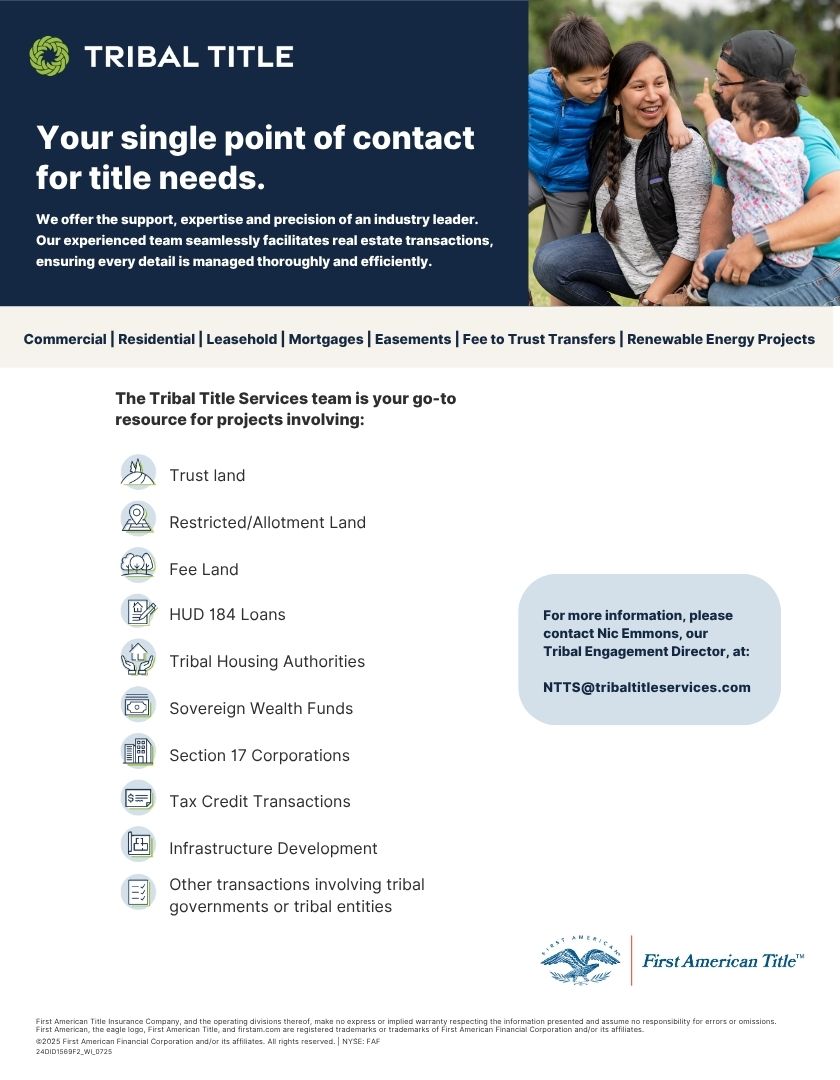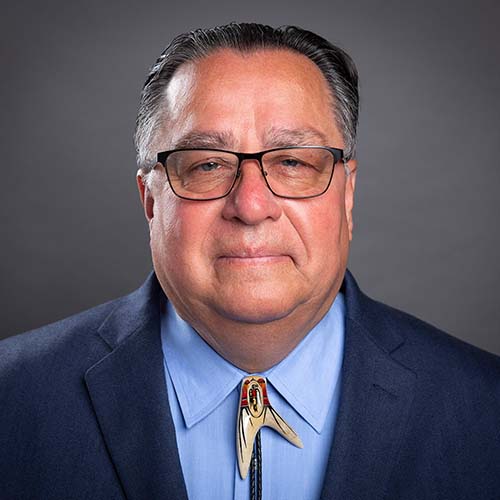
- Details
- By National Tribal Title Services
Imagine, for a moment, that your Nation is collaborating with a renewable energy developer to construct a medium-scale solar farm on newly acquired trust land within its reservation boundaries. The Nation and developer agree on a lease, project plan, and financing. However, when submitting the deal for final approval, they encounter delays at multiple levels: the Bureau of Indian Affairs (BIA) regional office delays title examination, and the Department of the Interior (DOI) takes months to approve rights-of-way; additionally, overlapping environmental and historic preservation reviews pile on further hold-ups.
These kinds of delays are unfortunately familiar throughout Indian Country. According to the U.S. Government Accountability Office (GAO), shortcomings in federal review processes have increased costs and project development times, resulting in missed development opportunities and lost revenue, while jeopardizing project viability. The GAO documented 18-month and multi-year reviews (including more than three years) for certain energy projects. In some cases, approvals took as long as eight years. Such drawn-out timelines place an unnecessary burden on Tribal Nations and often deter potential partners and investors.
Compounding the challenge is the legacy of fractionated land ownership, which also affects millions of acres across Indian Country. To address that, the U.S. Government launched the Land Buy-Back Program (LBBP) following the Cobell Settlement. Over its lifespan, the LBBP consolidated nearly 3 million acres of fractionated land in collaboration with about 50 Tribal Nations in 15 states, transferring much of that to trust. During this time, approximately $1.69 billion was paid to more than 123,000 individuals. The program, which was funded through a $1.9 billion Trust Land Consolidation Fund, aimed to simplify title systems, enabling Tribal development interests to move more efficiently.
Yet, even ambitious federal efforts, such as the LBBP, faced internal challenges. A DOI Office of Inspector General review found that the BIA jeopardized program accomplishments by improperly delegating title authority in some regions, which created confusion over roles and resulted in title document defects. Meanwhile, developers continue to face prolonged timelines because these overlapping approvals must satisfy multiple federal and Tribal requirements within that complex regulatory framework. Together, these conditions often extend project completion well beyond standard market timeframes, constraining the ability of Tribal Nations to attract outside investment.
This is where National Tribal Title Services (NTTS) seeks to make a difference. By combining a relational, trust-based approach with legal expertise in trust and land law and leveraging First American Title's infrastructure, NTTS aims to simplify complexity, reduce delays, and deliver certainty. Tribal leaders deserve a title partner that understands both the technical and sovereign dimensions of their development needs. With NTTS, Tribal Nations gain a partner committed to clarity, respect, timeliness, and reciprocity, clearing the path for sustainable investment on Tribal lands.

Help us defend tribal sovereignty.
At Native News Online, our mission is rooted in telling the stories that strengthen sovereignty and uplift Indigenous voices — not just at year’s end, but every single day.
Because of your generosity last year, we were able to keep our reporters on the ground in tribal communities, at national gatherings and in the halls of Congress — covering the issues that matter most to Indian Country: sovereignty, culture, education, health and economic opportunity.
That support sustained us through a tough year in 2025. Now, as we look to the year ahead, we need your help right now to ensure warrior journalism remains strong — reporting that defends tribal sovereignty, amplifies Native truth, and holds power accountable.
 The stakes couldn't be higher. Your support keeps Native voices heard, Native stories told and Native sovereignty defended.
The stakes couldn't be higher. Your support keeps Native voices heard, Native stories told and Native sovereignty defended.
Stand with Warrior Journalism today.
Levi Rickert (Potawatomi), Editor & Publisher
